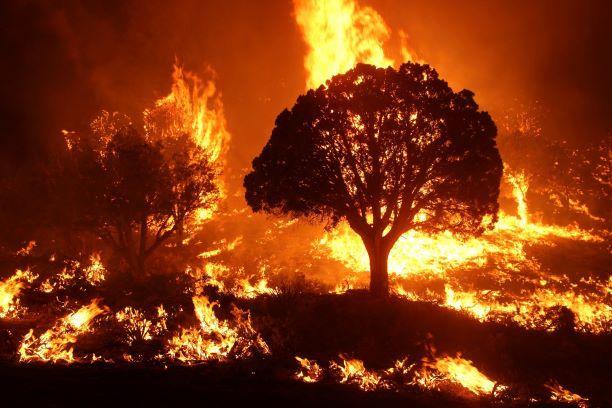What is a Wildfire?

A wildfire is a fire that burns out of control in a natural area, like a forest, grassland, or prairie. Wildfire smoke is a mixture of hazardous air pollutants, such PM2.5, NO2, ozone, aromatic hydrocarbons, or lead. In addition to contaminating the air with toxic pollutants, wildfires also simultaneously impact the climate by releasing large quantities of carbon dioxide and other greenhouse gases into the atmosphere.
Increase in Wildfire Activity
Wildfires are increasing around the globe in frequency, severity and duration, heightening the need to understand the health effects of wildfire exposure. The risk of wildfires grows in extremely dry conditions, such as drought, heat waves and during high winds.
With climate change leading to warmer temperatures and drier conditions and the increasing urbanization of rural areas, the fire season is starting earlier and ending later. Wildfire events are getting more extreme in terms of acres burned, duration and intensity, and they can disrupt transportation, communications, water supply, and power and gas services.
NASA's Terra and Aqua satellites detect active wildfires twice each day. Scientists studied this data over a 21-year span and found that extreme wildfires have become more frequent, more intense, and larger. The largest increase in extreme fire behavior was in the temperate conifer forests of the Western U.S. and the boreal forests of northern North America and Russia. Warmer nighttime temperatures are a major contributing factor, allowing fire activity to persist overnight.